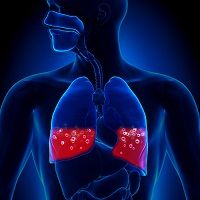Article
New Tool Predicts Immune Therapies' Effects on Lung Cancer Patients
Author(s):
A team of researchers announced they have created a new tool that identified which lung cancer patients will benefit from immunotherapy medications.

A team of researchers announced they have created a new tool that identified which lung cancer patients will benefit from immunotherapy medications.
Using a process called multiplexed quantitative fluorescence (QIF), investigators from Yale University measured tumor-infiltrating lymphocytes (TILs), a white blood cell which attacks tumors.
The researchers reported in the Journal of the National Cancer Institute that higher levels of CD3 or CD8 cells were linked to longer survival outcomes in patients.
“However, only CD8 was independent from age, tumor size, histology, and stage in multivariable analysis. High CD20 was associated with longer survival in the YTMA79 cohort,” the writers noted.
According to a Yale University statement, this new instrument is favorable as older immune-measuring devices’ results were not “objective, quantitative, and reproducible”.
“The strength of our method is that it allows simultaneous measurement of different TIL subtypes and removes the subjectivity from the process by using automated scoring. In addition, this assay can assess TILs activity in different tumor compartments,” an associate research scientist at Yale School of Medicine, director of the Translational Immuno-oncology Laboratory at the Yale Cancer Center and the paper’s first author, Kurt Schalper said. “We believe that this method could help determine which patients are more likely to benefit from new immune checkpoint therapies.”
This new tool would not only help in creating effective immunostimulatory treatments by gauging anti-tumor immune reactions, but would also allow clinicians to know which patients would benefit from therapies that activate unexplored immune areas, the release also mentioned.
In the future, the team plans to study how measuring these cells can be implemented into basic clinical assessments.
“Future studies measuring TIL subpopulations using QIF in whole-tissue sections specimens from patients treated with such compounds might provide a better substrate to conclusively address the predictive value of these markers,” the authors concluded.




